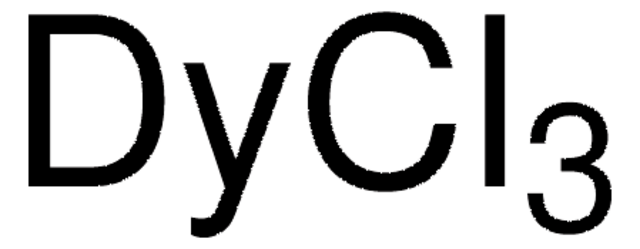261076
Dysprosium
ingot, 99.9% trace rare earth metals basis
About This Item
Productos recomendados
assay
99.9% trace rare earth metals basis
form
ingot
reaction suitability
reagent type: catalyst
core: dysprosium
resistivity
89 μΩ-cm, 20°C
bp
2567 °C (lit.)
mp
1412 °C (lit.)
density
8.559 g/mL at 25 °C (lit.)
SMILES string
[Dy]
InChI
1S/Dy
InChI key
KBQHZAAAGSGFKK-UHFFFAOYSA-N
¿Está buscando productos similares? Visita Guía de comparación de productos
Categorías relacionadas
Storage Class
11 - Combustible Solids
wgk_germany
WGK 3
flash_point_f
Not applicable
flash_point_c
Not applicable
ppe
Eyeshields, Gloves, type P3 (EN 143) respirator cartridges
Certificados de análisis (COA)
Busque Certificados de análisis (COA) introduciendo el número de lote del producto. Los números de lote se encuentran en la etiqueta del producto después de las palabras «Lot» o «Batch»
¿Ya tiene este producto?
Encuentre la documentación para los productos que ha comprado recientemente en la Biblioteca de documentos.
Artículos
Today, near-room-temperature refrigeration is almost entirely based on a vapor-compression refrigeration cycle.
A significant limiting factor for wearable electronics and wireless sensors is the finite amount of energy that can be stored in on-board batteries.
Rechargeable solid-state batteries are becoming increasingly important due to wide-spread use in computers, portable electronics, and vehicular applications.
Nuestro equipo de científicos tiene experiencia en todas las áreas de investigación: Ciencias de la vida, Ciencia de los materiales, Síntesis química, Cromatografía, Analítica y muchas otras.
Póngase en contacto con el Servicio técnico






